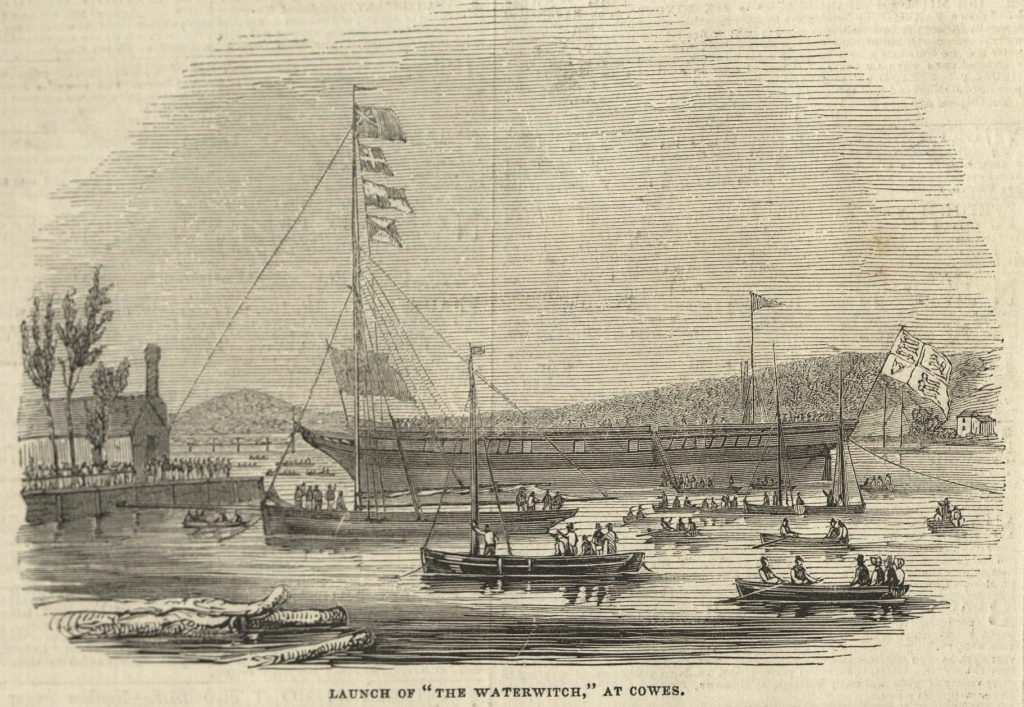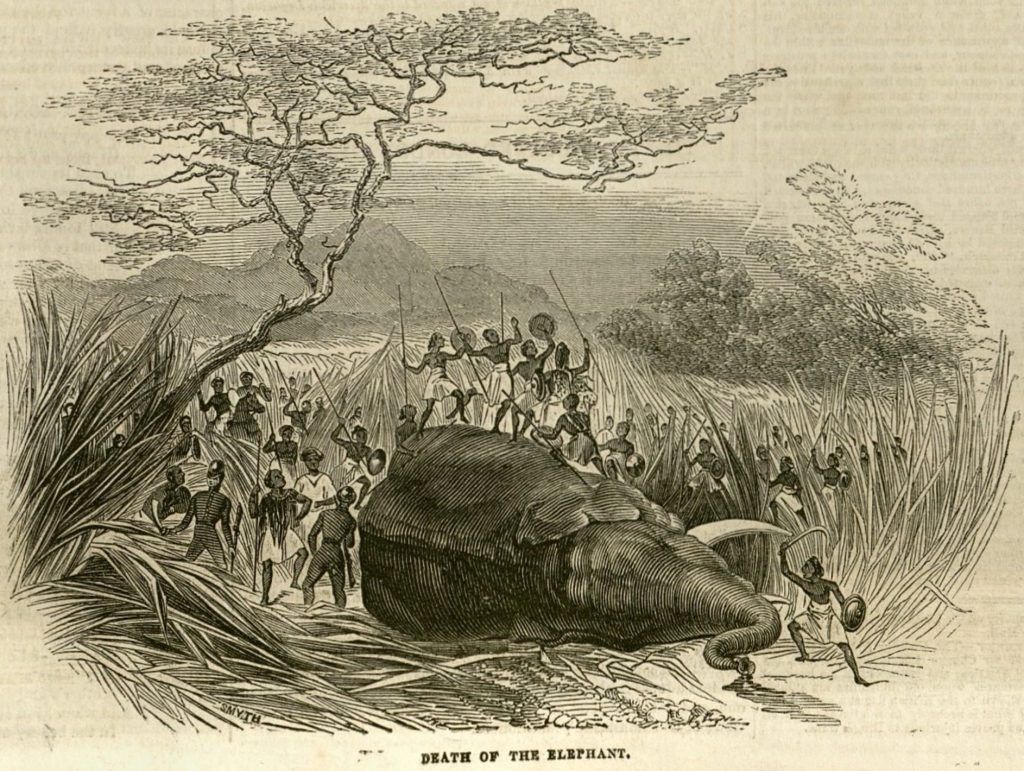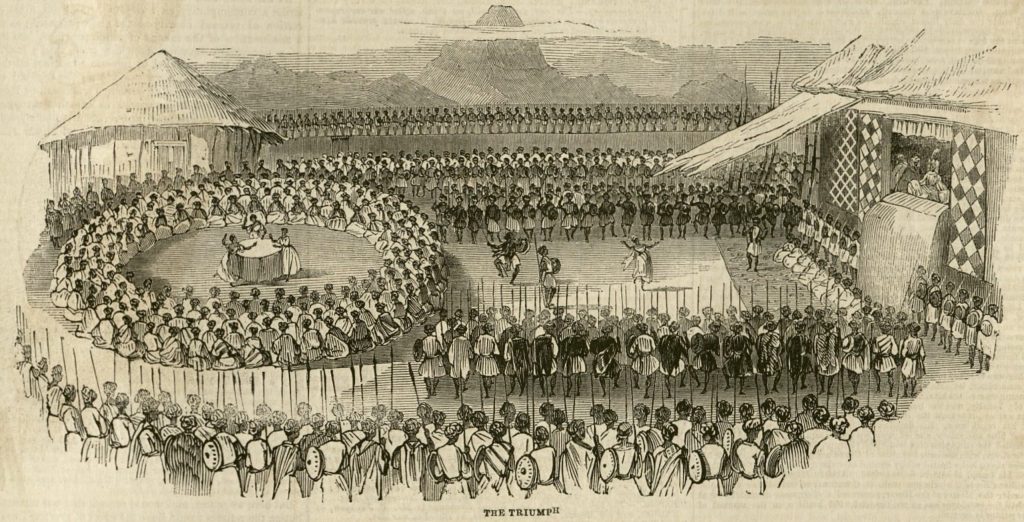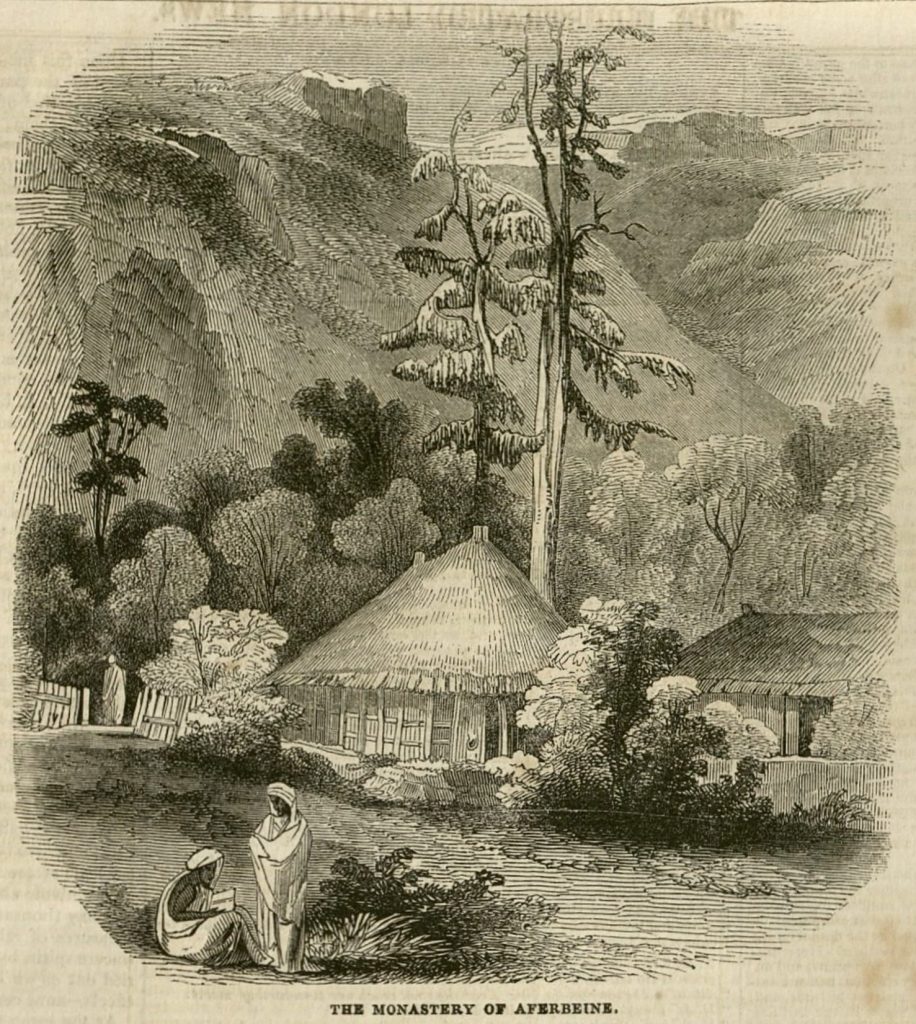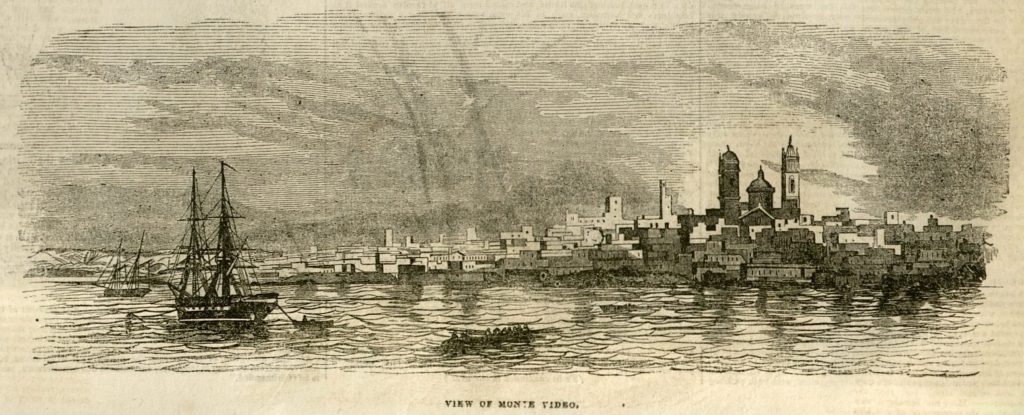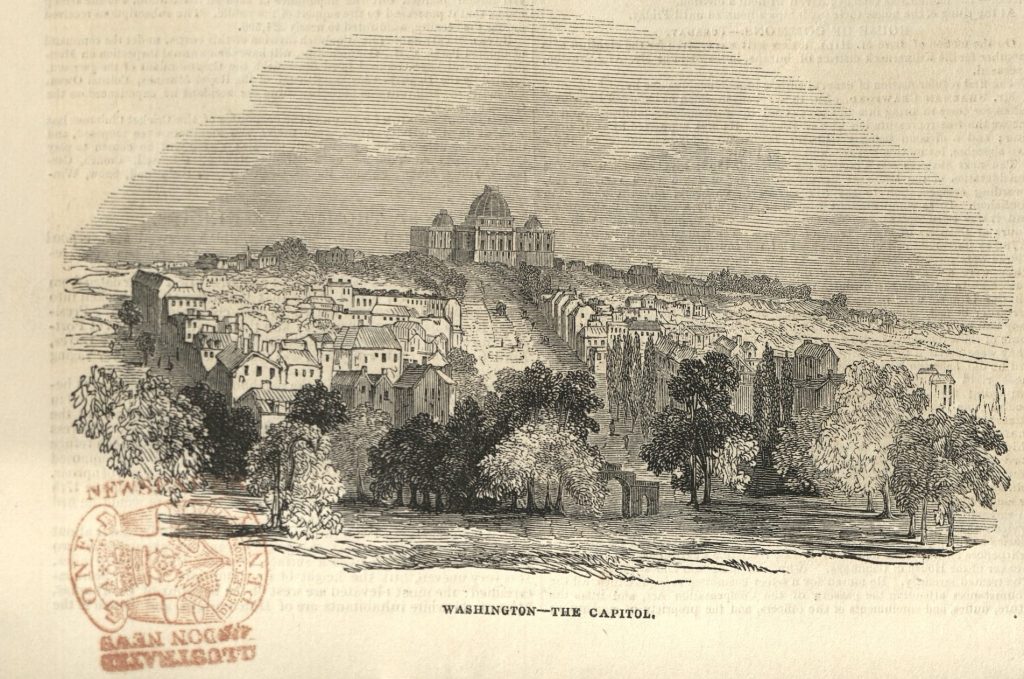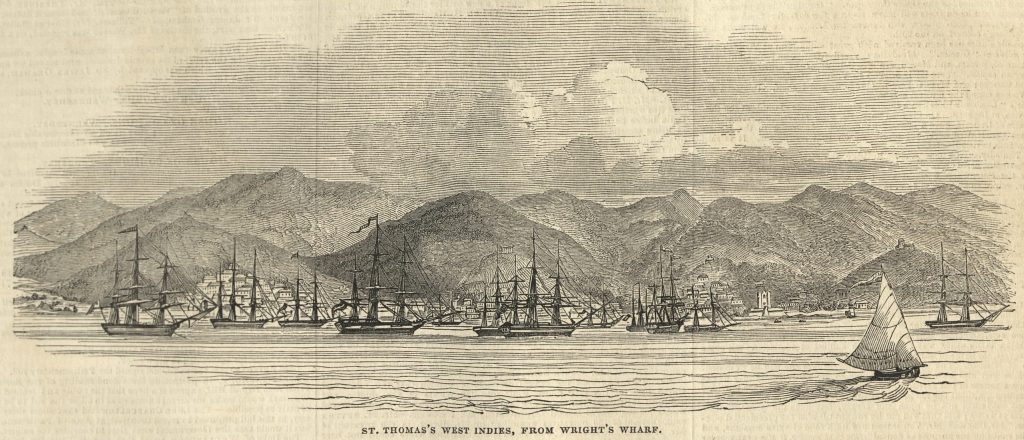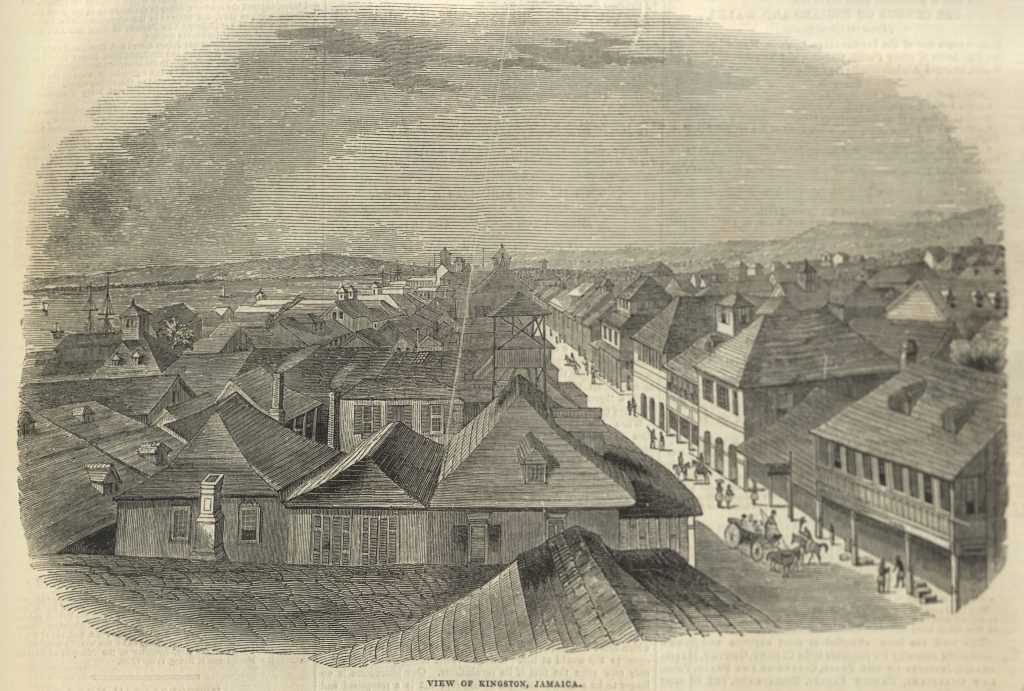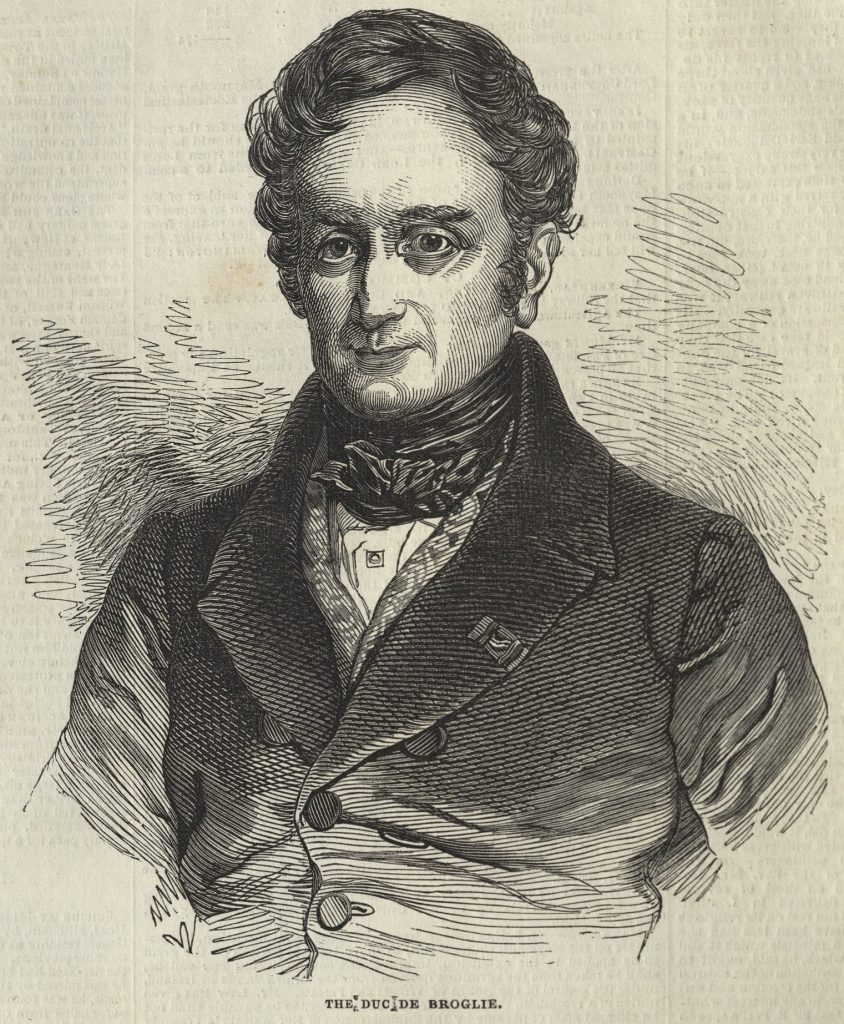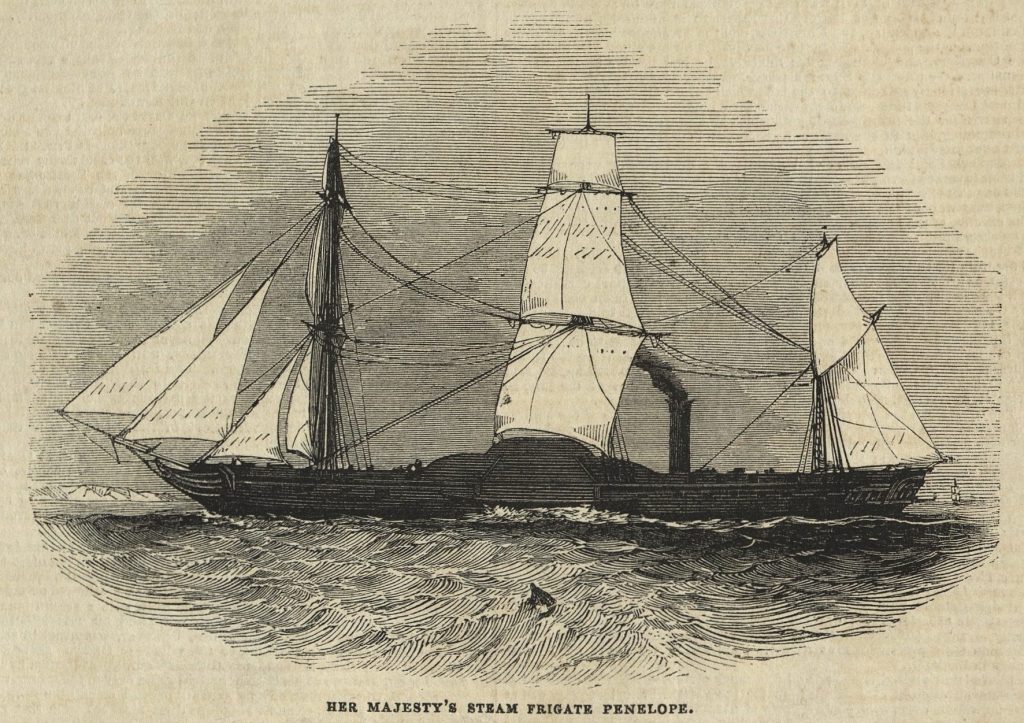One of the most successful cruisers in the campaign, the H.M.S. Waterwitch was a British naval vessel that pursued slavers in the Atlantic and Indian oceans. The following image shows the launch of the Waterwitch during the peak period of the suppression. The Illustrated London News, 22 June 1844. Courtesy of University of Missouri Libraries.
Read More
Hunters in east Africa traveled three miles in order to track and kill the depicted elephant. The Illustrated London News, 30 December 1843. Courtesy of University of Missouri Libraries.
Read More
Ethiopia was long involved in the slave trade from the Horn of Africa. Several of the slaves that the kingdom sold into the trade were originally war prisoners, captured in wars and crusades waged against its neighbors, many of them Muslims. The Illustrated London News, 30 December 1843. Courtesy of University of Missouri Libraries.
Read More
Ethiopia, or Abyssinia, as Europeans commonly called it in the nineteenth century, was an old Christian kingdom located in the Horn of Africa. It was long involved in the slave trade across the Red Sea, Indian Ocean, and the Saharan Desert. As the suppression of the African slave trade gradually shifted to the east, Ethiopia […]
Read More
Montevideo, Uruguay, emerged as an important slave trade port in the nineteenth century. Located at the mouth of Rio de la Plata, it provided easy access to cattle ranches, plantations, and trade routes to the Andes and other places in South America. The Illustrated London News, 30 December 1843. Courtesy of University of Missouri Libraries.
Read More
Washington was the capital of the United States. This picture shows the partly completed Capitol building in the 1840s. The Illustrated London News, 18 May 1844. Courtesy of University of Missouri Libraries.
Read More
St. Thomas was a Danish plantation colony in the West Indies. It had been captured by the British during the Napoleonic Wars, but was returned to Denmark during the Nineteenth Century. The Illustrated London News, 18 May 1844. Courtesy of University of Missouri Libraries.
Read More
Before 1807, when the British slave trade was still legal, Kingston was an important port of slave disembarkation in the West Indies. However, since the beginning of the suppression campaign, the port served as a seat for one of the international courts responsible for adjudicating ships accused of transporting slaves illegally. The following image shows […]
Read More
The Duc de Broglie, was a French Foreign Minister under the ‘July Monarchy’ of Louis Phillipe. He played a central role in the bilateral negotiations with Britain for the suppression of the slave trade during the 1840s. The Illustrated London News, 26 April 1845. Courtesy of University of Missouri Libraries.
Read More
The suppression of the African slave trade required the use of significant naval power. The following image shows one of the British man of war deployed in the campaign, the H.M.S. Frigate Penelope. The Illustrated London News, 1 July 1843. Courtesy of University of Missouri Libraries.
Read More

